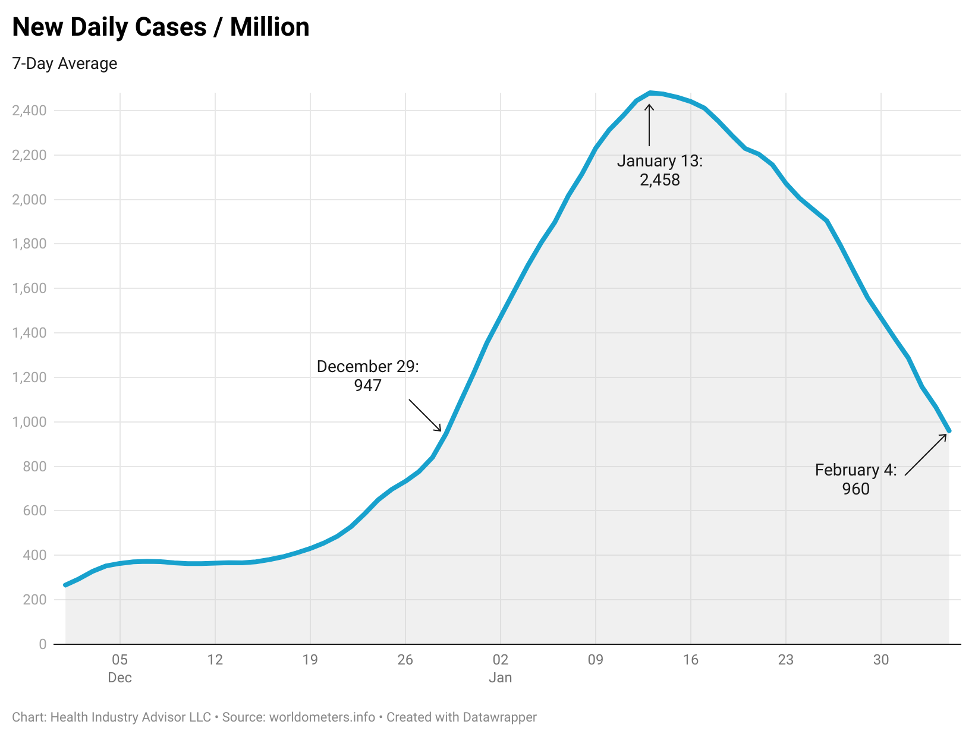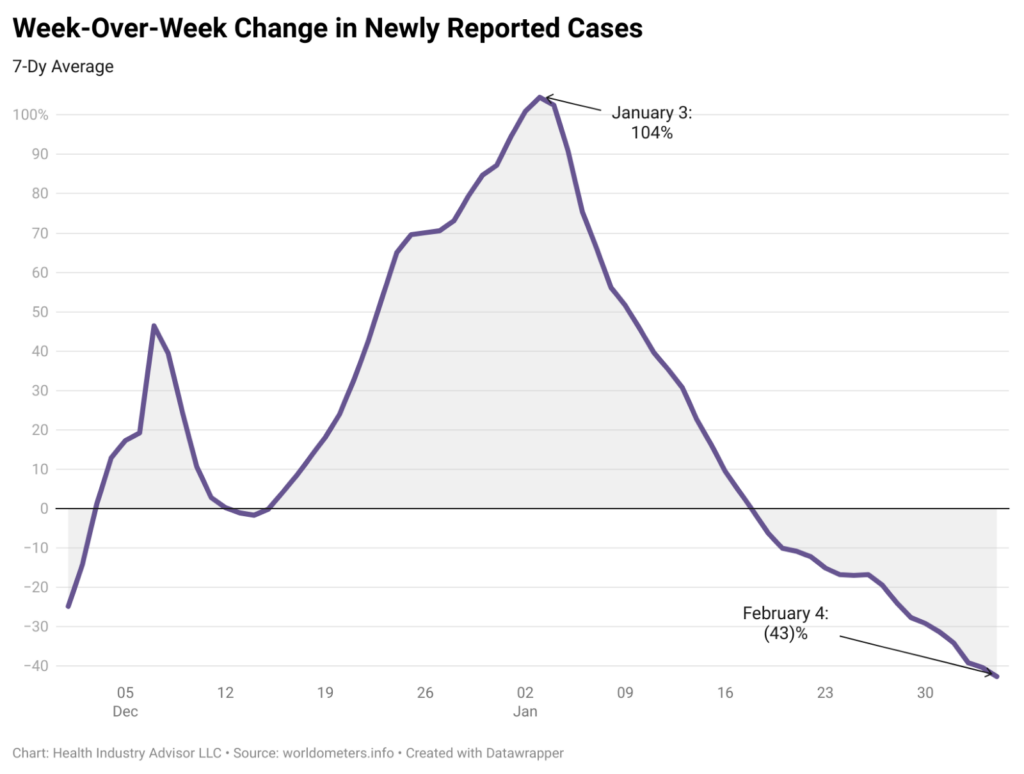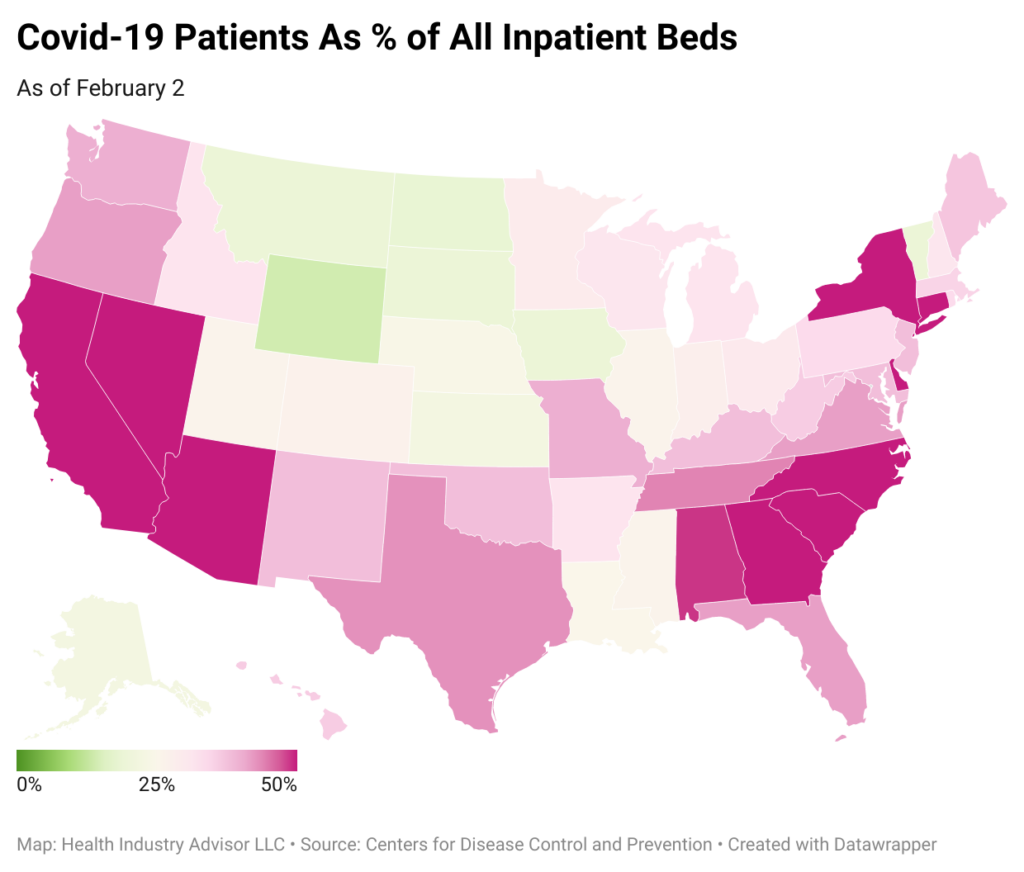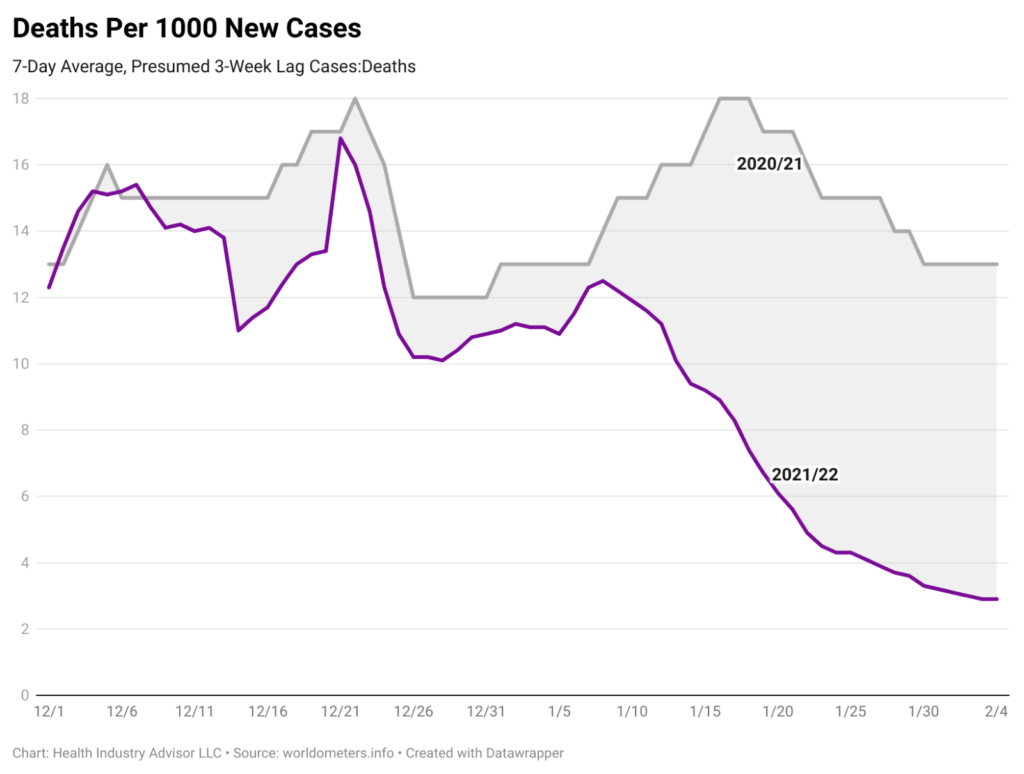By Mark Van Sumeren
The first week of February brought encouraging developments with the Covid pandemic in the United States. By the end of this month, this Omicron wave may be mostly in our rear-view mirror. Nonetheless, it’s premature to declare victory.
Reported Covid cases, which have fallen since mid-January, plunged even faster last week. Cases tumbled to just more than half the number reported a week earlier. Only a month ago, new cases doubled in a single week.

Further, the rate of decline in new cases increased for the seventeenth consecutive day.

Expert forecasters expect this trend to continue. The ensemble forecast predicts another 40% decline in the next three weeks. This forecast anticipates the infection rate at month-end will sink to a third of the rate seen at the beginning of the year.
The Institute for Health Metrics and Evaluation (IHME) provides a more optimistic perspective. By month’s end, expected new infections fall to one-tenth of the number seen in early January. Further, IHME’s forecast foresees uninterrupted improvement through at least June 1.
The decline in new cases stretched across the country: Forty-eight states reported fewer cases last week than a week earlier. In forty states, cases declined by 40% or more.
Still, the strain on our healthcare system persists. The appropriate Covid response involves minimizing this strain and limiting severe infections.
Hospitals admitted fewer patients with Covid last week than the prior week, a daily pattern that began nearly three weeks ago. Admissions dropped 28% already. Similarly, the hospital census of Covid patients declined steadily for the past two weeks. This census fell by 18% thus far.
The healthcare system benefits from a mild and easing flu season too. Flu visits declined for the fourth consecutive week, approaching seasonal lows in the latest available data.
Nevertheless, Covid patients occupied two of every five hospital beds in the United States last week. Large coastal and border states strained the most. Covid patients took up more than half of the bed capacity in Arizona, California, Connecticut, Delaware, Georgia, Nevada, New York, North Carolina, and South Carolina.

The beleaguered healthcare system could see relief soon. The IHME model anticipates Covid admissions falling by the end of the month to one-fifth of the number seen at the peak in early January. Correspondingly, the projected Covid census at the end of the month dips to less than one-quarter of its January peak.
Deaths with Covid remain too high. However, the death count stabilized or perhaps dipped recently. The ensemble forecast predicts that new deaths will peak this week, followed by a 20% decline in the next two weeks.
We have seen a remarkable decline in the case fatality rate thus far during the Omicron wave. A year ago, we suffered between 12 and 18 deaths for every 1000 reported cases in the United States (presuming a three-week lag from case-to-death.) Pre-Omicron, this rate improved to between 10 and 15. This rate plunged throughout the Omicron wave, dropping to 3 deaths per 1000 cases for the past two weeks. The actual rate could be much lower, considering the sizable number of unreported infections in this country.

What factors caused this profound drop in the case fatality rate? Presumably, better therapies and treatments contributed. The Omicron variant may be less damaging than prior variants. Also, previous infection and vaccination could enhance our resistance to severe disease.
